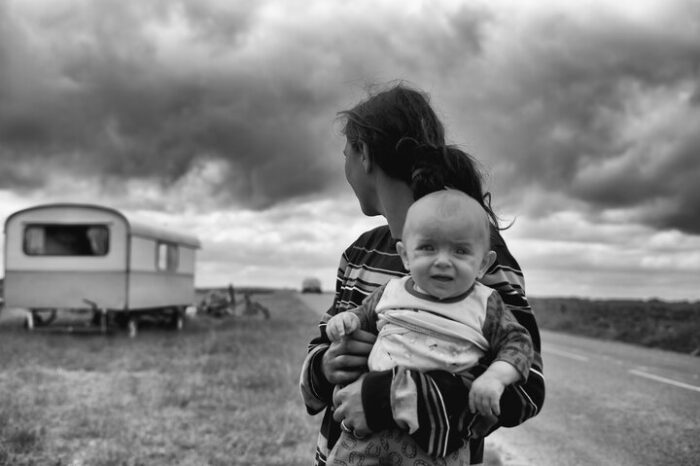
The study “Romaphobia in the UK Right-Wing Press: racist and populist discourse during the Brexit referendum” by Petre Breazu and Aidan McGarry from Loughborough University used multimodal critical discourse analysis to investigate racist tropes about the Roma during Brexit in two British newspapers: The Sun and The Daily Mail.
Racism towards the Roma is also called “antigypsyism”, “antiziganism”, “anti-Roma racism” and “Romaphobia”, in previous research by Hancock, End, Vidra and Fox, and McGarry, respectively. Roma number about 10-12 million in Europe and have been historically subjected to extreme violence and social exclusion, including slavery and the Holocaust. The systemic oppression is ongoing and Romaphobia has been termed by Chovanec (2017) and McGarry as the “last acceptable form of racism”.
It has been speculated that intolerance towards the Roma has been on the rise due to the shift to more right-wing, populist politics. In the media, populist discourse is framed as fears of immigration, economic instability, and as a loss of cultural values or national autonomy. Some scholars even compare the actions taking place now to Nazis during the World War 2. The authors here argue that Romaphobia is a peripheral tactic within the broader right-wing agenda. Brexit particularly heightened these discourses, with Romaphobia playing an important role in 2016 Brexit discourse.
The authors depart from the ideational definition of populism as being supporting “the will of the people” and argue instead that populism is a discourse employed by the elites to advance political interest ostensibly in the name of the “ordinary people”. Populism is most successful when people are disappointed with the socio-economic issues and politicians are perceived as being incapable to address issues impacting ordinary people.
Nativism, on the other hand, is understood by the authors as a discourse constructed around adverse narratives about “us”, the natives, and “them”, the non-natives. Nativist rhetoric promotes an idea of native people disenfranchised in their own land.
The two newspapers chosen for the study, The Sun and The Daily Mail, are known for their right-wing leaning and Eurosceptic views. The data was collected from the database of each newspaper’s archive, with search words such as “Roma”, “Romanians” or “beggars”. They were collected to a corpus, and after this, 169 articles from The Daily Mail and 50 articles from The Sun were chosen for two-phase analysis, first thematic analysis and then Multimodal Critical Discourse Analysis.
There were three major themes: law and order, socio-economic concerns, and cultural otherness. The authors show how Roma were demonised and scapegoated via textual and visual representations as “undesirable immigrants”. Their purported criminality was depicted as being “out of control” on a broad spectrum.
One discourse is that of “taking back control” (of land, borders, country), in which the current EU membership was seen as a contributing factor to the state of affairs where Roma have “lavish mansions” built for them and “swindle millions of pounds of benefits” – constructing the Roma as exploiters of welfare. They were also depicted as being crafty in manipulative techniques.
The entire community was at times substituted as an “organised gang” willing to trespass and social and moral laws, not interested in conventional ways of earning a wage and exploitative of their own children. The authors point an interesting discrepancy: in the pictures, the migrants are depicted as terrified, broken, and desperate, but the text instead suggests that they are “getting away with it” and possess agency. This is reinforced by the captions and the overall linguistic context.
Discourse is also about what is left out. For example, while begging is often, along with criminality, associated with the Roma, there are no mentions of begging being an act of desperation. Also, absent are the mentions of Anti-Roma historical persecution in Europe. There is also little emphasis on the fact that Roma are an extremely heterogenous group of people with different cultures, languages, and nationalities. The accounts also overlook current discrimination and social exclusion.
The emotional messages carried by the discourse in the articles suggest that voicing anger over the Roma is a daring act, such as when Priti Patel did so. Her speech also allows for the listeners to construct themselves as welcoming of “good migrants” while being rightfully angry at migrants who are a “burden” on the society – as reinforced by visual and textual discourses depicting the Roma as lazy loungers.
In conclusion, the authors showed how stereotypical discourses about the Roma were incorporated into right-wing rhetoric in the two newspapers. Racism is ‘skillfully’ disguised as cultural incompatibility, socio-economic threats or issues of law and order. Romaphobia is denied of being racist, instead, it is discursively constructed as being about the Roma’s violation of social conventions and laws and their cultural otherness.
All in all, Roma become emblematic of the type of migrants not welcome in the UK and as a vehicle to promote and reinforce populist ideas. The blame is laid at the EU with its freedom of movement principle. Finally, voting for Brexit is presented as the way for ordinary citizens to fix things and take back control.
The article “Romaphobia in the UK Right-Wing Press: racist and populist discourse during the Brexit referendum” by Petre Breazu and Aidan McGarry is in Social Semiotics. (open access).
Picture: La Piéta des Manouches by Johann Walter Bantz.
License Unsplash.